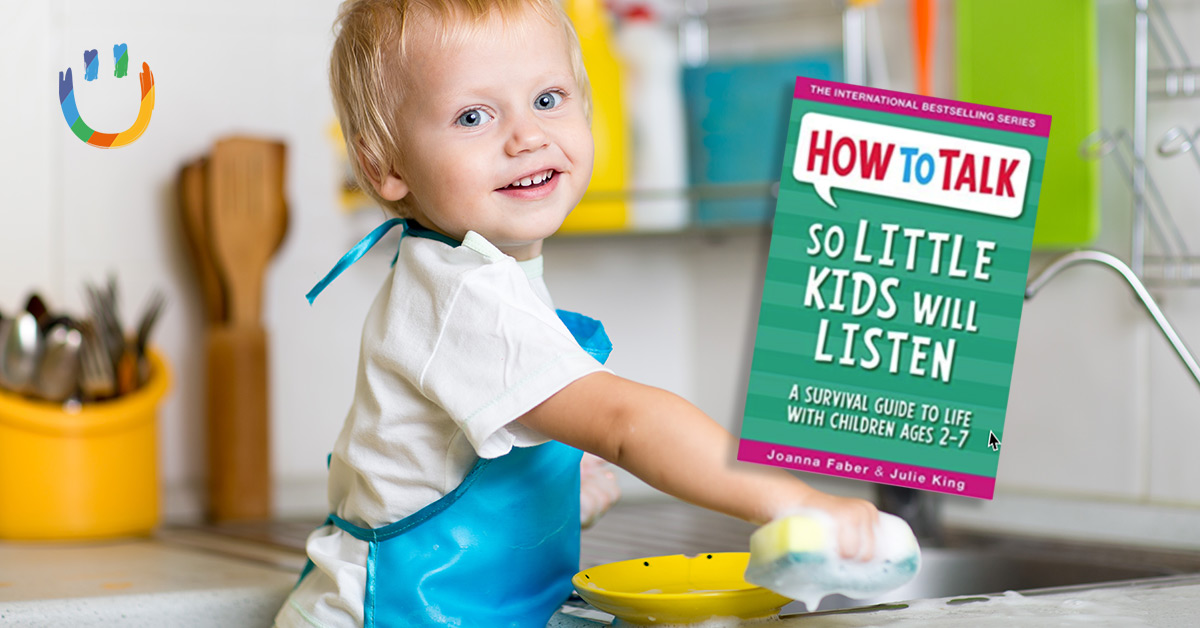Tools to help how to talk to small children
With Father’s Day fast approaching we thought it might be fun to get the dads involved! Recently our marketing guy read the book “How to talk so little kids will listen: A Survival Guide to Life with Children Ages 2 – 7”. Being a newish father again himself, with his youngest being 2 1/2 years old and his oldest 20, he thought he better brush up on his little people skills again. Things may have changed a little in the last 20 odd years, not surprisingly he found the book very insightful.
We thought we would share his top takeaways from the book.
“A person’s a person, no matter how small!” – Horton the Elephant (Dr. Seuss)

Emotions – Kids don’t behave right, when they don’t feel right.
One of his big ah-ha moments was how easy it can be to be dismissive of children’s feelings, especially with Australian men who can have a ‘she’ll be right’ attitude, and can at times see ‘feelings’ as a weakness.
As Joanna Faber and Julie King say in the book, children have to experience the negative feeling to be able to move on to the positive feeling. So, dismissing the feeling is not going to help anyone, especially the child.
Often a simple acknowledgement of the child’s feeling is enough to defuse a potential meltdown. The best way we can help our children ‘get over something’ is to help them through it. There are a variety of tools we can use to acknowledge these emotions and help the children through them. These include –
Acknowledge feelings with words
We can help them understand the emotion they are feeling by putting it into words. For example – a child may say “This puzzle is too hard!”, you may be inclined to respond with ”No, it isn’t, I’ll help you”. A better response could be “Ah, puzzles can be frustrating! All those little pieces.” In this way, the child understands the emotion is frustration and that it is ok to feel frustrated.
Acknowledge feelings with writing
Even though some children may not be reading yet, the written word can still be very powerful.
Acknowledge feelings with art
Similar to acknowledging a feeling by writing it down, sometimes drawing it can have a greater impact.
Acknowledge feelings with silent attention
Sometimes all the child needs to hear or see is a small gesture to let them know you have acknowledged that they are feeling something. This could be as simple as – “Ugh!”, “Mmmmm”, “Ooh” or “Huh”
Getting kids to do what they have to do
As parents we are generally always on the go, juggling a variety of chores, work and of course kids. Getting the little ones to co-operate is often a challenge on its own. But there are tools for this as well!
Be playful
Turning tasks into a game can be a fun way to get the kids involved, for example, instead of asking the kids to clean up their toys, it could a challenge to see who can do it the fastest. Using silly voices or accents, pretending or even making the objects talk! “I’m a stinky sock, I need to go to the washing basket!”
Offer a choice
Sometimes children want control, so giving them a simple choice can provide more motivation for a child. For example – Do you want a bubble bath or shower?
Give them more information
As educators you are already aware that children are a lot brighter than they are often given credit for. Sometimes telling them what to do won’t cut it, but by giving them a little bit more information they can often work things out for themselves.
These are just a few of the tools discussed in the book which stood out for our marketing guy. What advice do you offer your parents when it comes to parenting or getting our little people to work with us! Tell us in the comments below!
Want to test drive Kindyhub?
Signup for a FREE 4 week Trial or Book an online Demo with one of the friendly team.
